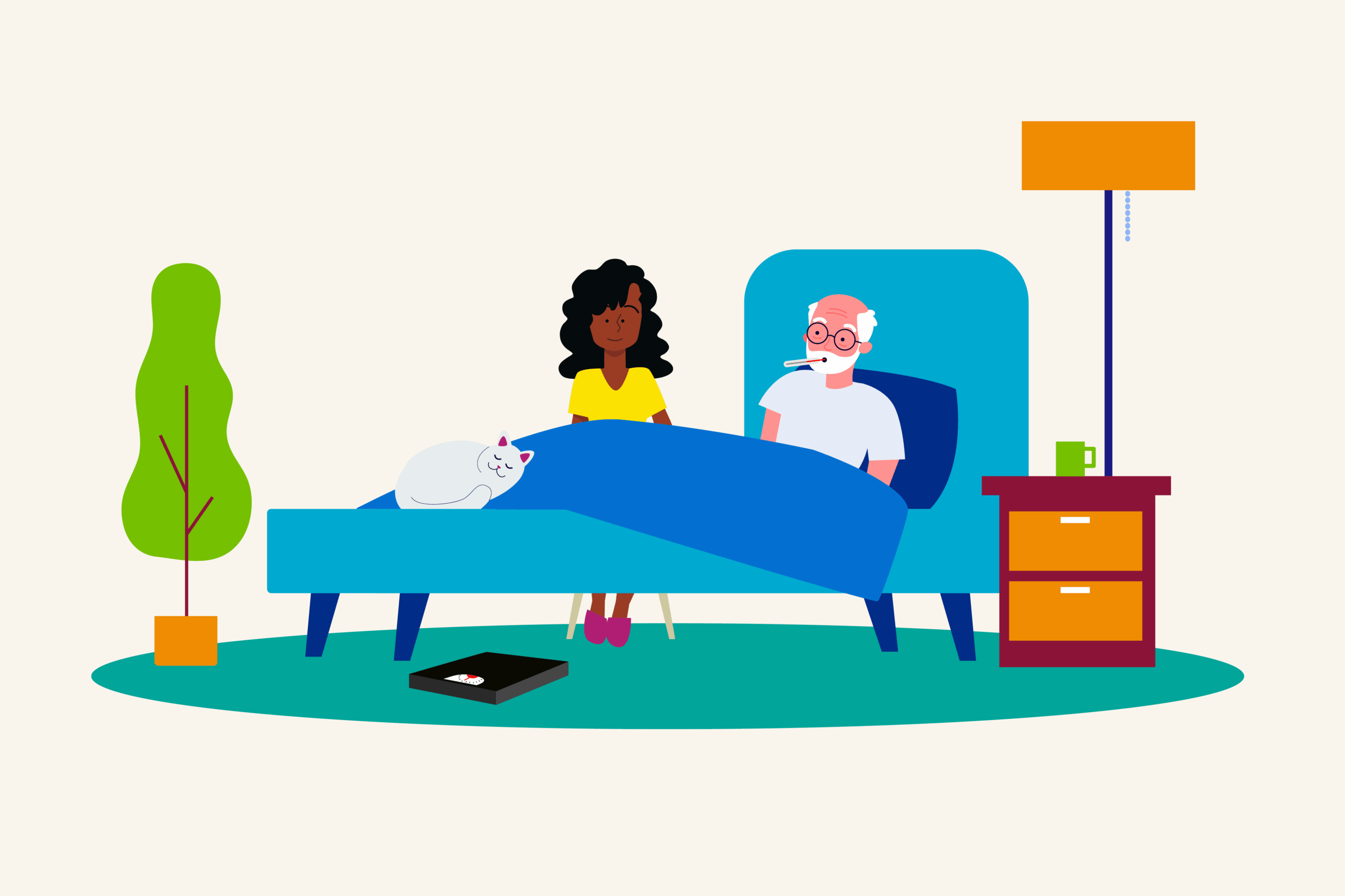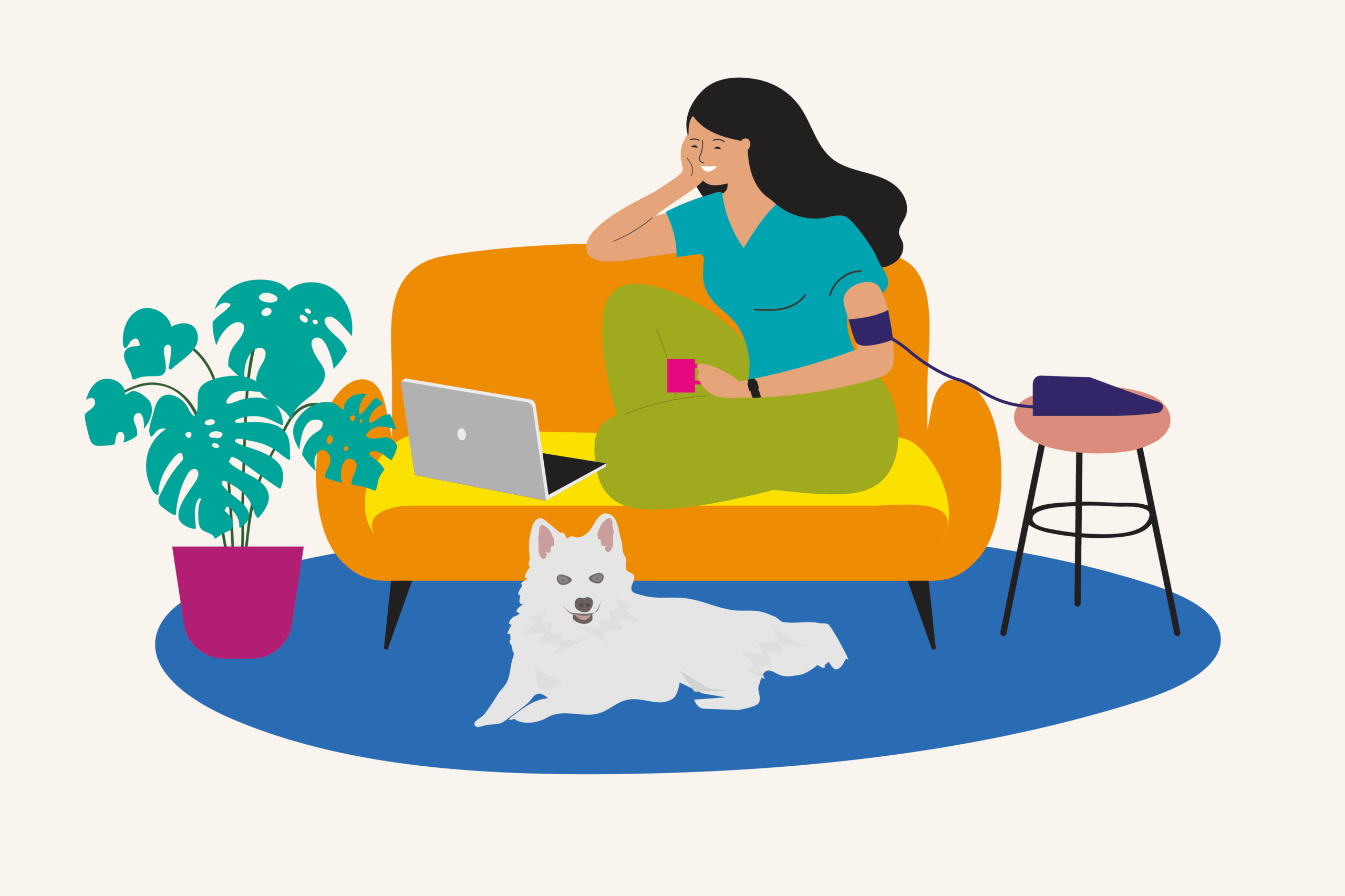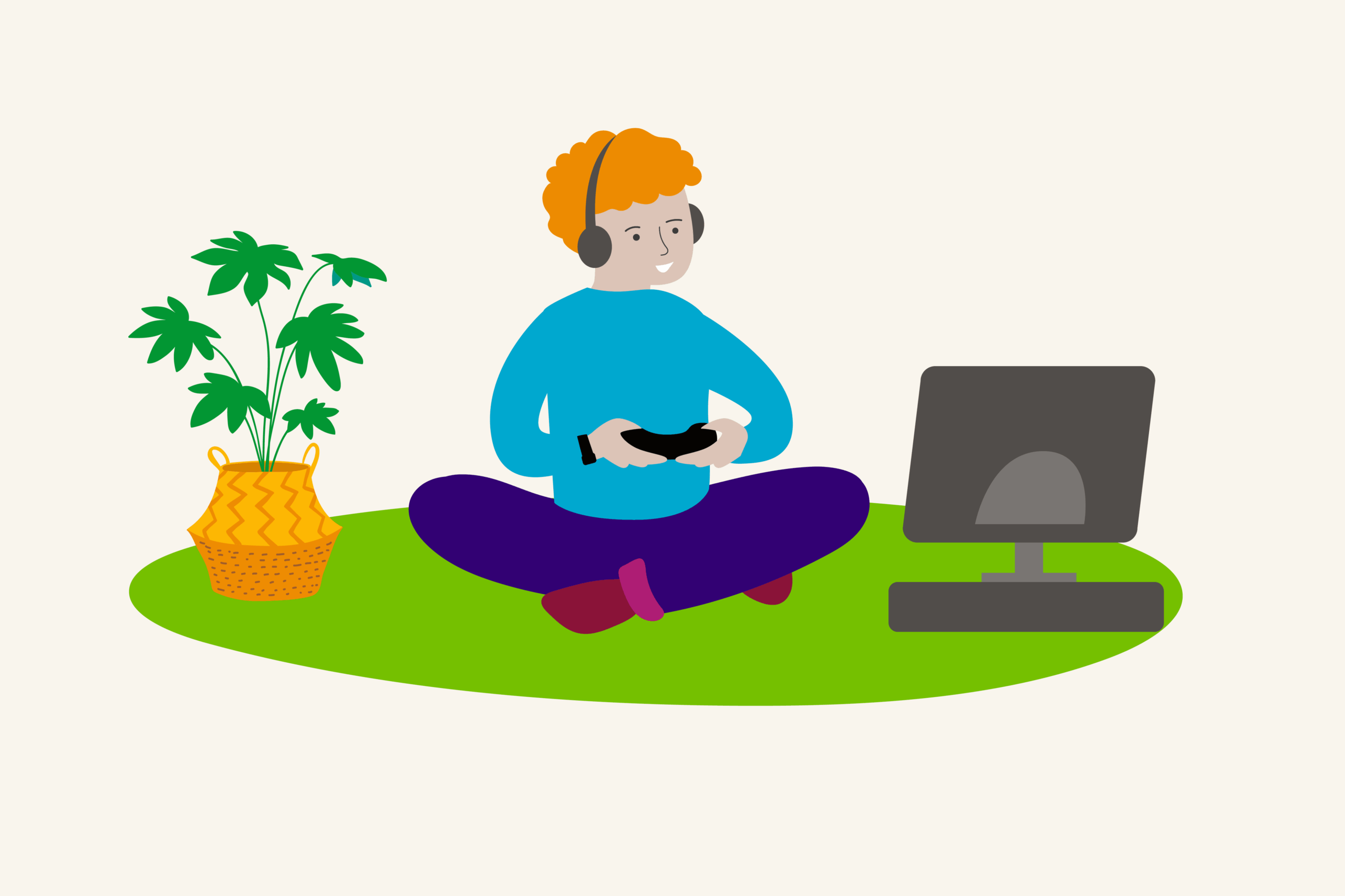How many times do you go into hospital, then you come back home, and you think “I’m glad I’m home”

Building user experiences and insights into the design and development of virtual wards ensures it is fit for purpose. Laura Rooney, Director of Strategy at Health Innovation Manchester, has been working on developing virtual wards across Greater Manchester over the last 12 months. In this blog, Laura provides her unique perspective on the evolution of this service.
Providing care in people’s homes isn’t new. Primary care and community teams have been doing this for decades. But utilising remote monitoring technology to deliver ‘virtual wards’ in people’s homes, who would otherwise have ended up in hospital, is being rolled out at pace and scale across the NHS in England, and here in Greater Manchester.
Virtual wards have been in existence in the NHS in different guises over several years, but the model came to the fore during the covid-19 pandemic when the NHS had to radically change how it delivered care. In Greater Manchester, we have been taking a more system-wide approach to virtual wards over the last 12 months, working towards implementing common pathways, operating models and standards across the city region.
The level of transformational change required to implement this sort of new model of care effectively shouldn’t be underestimated. We wanted to ensure the views, experiences and insights of patients, carers and clinicians featured throughout our design, development and deployment process:
“Virtual wards need to designed inclusively to ensure they promote equity of access, improve outcomes, support a positive patient experience and do not deepen inequalities in communities.”
We ran a listening exercise during 2022 to engage with patients, carers and clinicians to learn from their experiences and perspectives to inform our approach:
Staying at home is an attractive option, especially for patients
Overall, we found that experiences of virtual wards, or hospital at home, tend to be positive for both patients and clinicians. Interestingly, patients talked less about the benefits of monitoring their physical illness, and more about the benefits of being able to recover surrounded by their home comforts, in a familiar and relaxed environment.
Being at home was also said to help with people’s mental health and wellbeing. Patients felt less anxious at home compared to a busy hospital ward, and being able to see family and friends when they wanted really helped.

Building trust and confidence is key
There were some worries about being missed, something going wrong, or suspicions about the technology. Providing reassurance and clear guidance to patients about safety measures, and the fact that there was a professional monitoring the data, was really important.
Patients also had concerns over whether it would add pressure onto their loved ones. Family and carers all expressed initial anxiety over the complexity of the kit and taking ownership of their care, such as doing accurate readings. However, once the kit had been set up and they could see everything working with no issues, their worries were typically alleviated.
There were particularly concerns about escalation and what would happen if a patient deteriorated at home:
“If I were staying at home and then it wasn’t right – would there be a space in hospital for me then?”
As with all new services, guidance and reassurance is crucial to ensure patients, families and carers are comfortable and confident with virtual wards. Therefore, the onboarding process between the patient and clinician is crucial for success and shouldn’t be underestimated.
Using tech in the ‘real world’
As the NHS continues to progress the use of new technologies in care delivery, there is still much more we need to do to ensure everyone has the understanding and skills needed to use technology with confidence.
There was a real mixture in people feeling fully confident through to others feeling inadequate once the clinician had left the home or they had been discharged from the physical ward.
There are also some ‘real world’ issues that people raised: from Wi-Fi connections dropping out, proximity to the kit hub impacting on readings, problems with Bluetooth, some bits being fiddly to use. We also heard about some inclusion and accessibility issues: people with a lack of dexterity could some of the kit difficult to use, or the potential for readings to be impacted by tattoos or skin colour.
All of these factors need to be considered when identifying people who may be suitable for this type of care at home. It isn’t a one size fits all approach.

Gaining clinical buy-in
Many clinicians saw the value in virtual wards straight away, and when others see the difference virtual wards makes to their patients it motivates them to engage:
“The best part of the virtual ward setup is the difference we’ve seen it’s made for patients…the ability to prevent admissions…the freeing up of time for clinicians.”
However, given this is such a new and transformational model of care, some remain uncertain and do not yet have the trust, expertise and confidence to ‘let go’ of face-to-face monitoring. The continued workforce pressures also mean clinical capacity to engage in developing these transformational care models can be limited. So, carving out space and time to focus on the people, process and cultural components of virtual wards is just as, if not more, important than technology itself.
There is also a need for clear eligibility criteria, ensuring patients are recovering in appropriate living conditions and have in-home support. We see virtual wards and Hospital at Home for many as an option to recover in a relaxed, familiar and comfortable environments. But importantly this is not the case for all, and careful consideration should be given to establish where each patient can best recover.
User led design
Overall, there is a strong, shared sense that the development and integration of virtual wards is the right thing to do, most importantly for the benefit to patients, their carers and families.
The what, how, when and why of virtual wards must be communicated clearly and succinctly to clinicians. There is already evidence to suggest that Hospital at Home can have a positive impact on clinical outcomes, as well as the overall patient experience. It is crucial to demonstrate to clinicians, through robust evidence and real-life case studies, the benefit of this service to their patients.
As virtual wards continue to be rolled out across Greater Manchester, we must continue to build our understanding and map the patient and carer experiences of virtual wards and capture the input of clinical staff, including people who are likely to face digital exclusion.

The insights shared in this blog are not part of a formal research study or evaluation. However, the NIHR Applied Research Collaboration Greater Manchester is working with us to undertake a more robust review. It has recently published a Rapid Evidence Synthesis where key findings are aligning with what we know so far about virtual wards.
We would like to thank our partners, Nexer Digital and Ethical Healthcare, for their support in undertaking the user experience design work.
We’d like to hear from you
Have you been involved in virtual wards or Hospital at Home in Greater Manchester, either as a clinician, patient or carer?
The NHS is increasingly introducing virtual wards, or ‘Hospital at Home’, to support people at the place they call home, including care homes.
To assist with the roll out and expansion of virtual wards/Hospital at Home across Greater Manchester, we are developing a communications campaign to raise increase awareness of this service.
Can you share your experiences to help other people understand about this service? Please get in touch: [email protected]




Further information
Read more about how Health Innovation Manchester is leading the transformation and optimisation of virtual wards and Hospital at Home across Greater Manchester.


